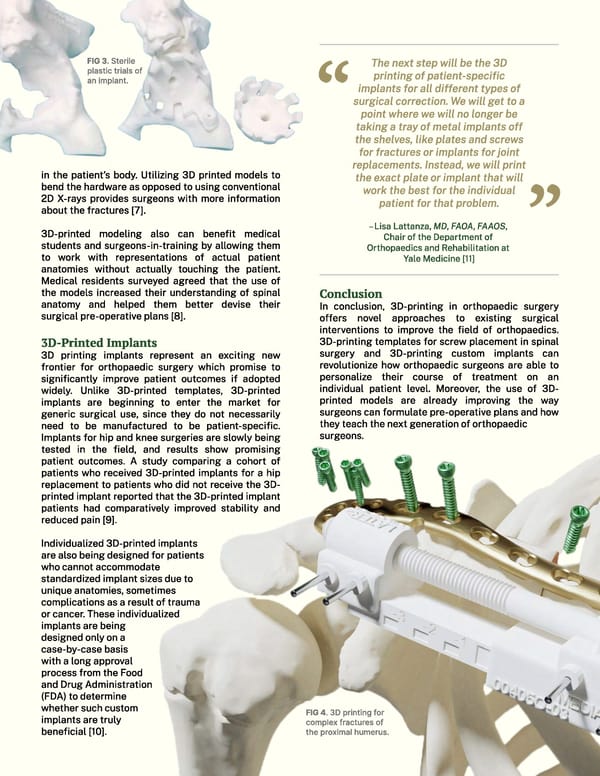FIG 3. Sterile The next step will be the 3D plastic trials of printing of patient-speci昀椀c an implant. implants for all different types of surgical correction. We will get to a point where we will no longer be taking a tray of metal implants off “ the shelves, like plates and screws for fractures or implants for joint replacements. Instead, we will print in the patient’s body. Utilizing 3D printed models to the exact plate or implant that will bend the hardware as opposed to using conventional work the best for the individual 2D X-rays provides surgeons with more information patient for that problem. about the fractures [7]㠀 – Lisa Lattanza, MD, FAOA, FAAOS, 3D-printed modeling also can bene昀椀t medical Chair of the Department ofꀀ ” students and surgeons-in-training by allowing them Orthopaedics and Rehabilitation at to work with representations of actual patient Yale Medicine [11] anatomies without actually touching the patient. Medical residents surveyed agreed that the use of the models increased their understanding of spinal Conclusio渀 anatomy and helped them better devise their In conclusion, 3D-printing in orthopaedic surgery surgical pre-operative plans [8]㠀 offers novel approaches to existing surgical interventions to improve the 昀椀eld of orthopaedics. 3D-printing templates for screw placement in spinal 3D-Printed Implant猀 surgery and 3D-printing custom implants can 3D printing implants represent an exciting new revolutionize how orthopaedic surgeons are able to frontier for orthopaedic surgery which promise to personalize their course of treatment on an signi昀椀cantly improve patient outcomes if adopted individual patient level. Moreover, the use of 3D- widely. Unlike 3D-printed templates, 3D-printed printed models are already improving the way implants are beginning to enter the market for surgeons can formulate pre-operative plans and how generic surgical use, since they do not necessarily they teach the next generation of orthopaedic need to be manufactured to be patient-speci昀椀c. surgeons. Implants for hip and knee surgeries are slowly being tested in the 昀椀eld, and results show promising patient outcomes. A study comparing a cohort of patients who received 3D-printed implants for a hip replacement to patients who did not receive the 3D- printed implant reported that the 3D-printed implant patients had comparatively improved stability and reduced pain [9]㠀 Individualized 3D-printed implants are also being designed for patients who cannot accommodate standardized implant sizes due to unique anatomies, sometimes complications as a result of trauma or cancer. These individualized implants are being designed only on a case-by-case basis with a long approval process from the Food and Drug Administration (FDA) to determine whether such custom FIG 4. 3D printing for implants are truly complex fractures of bene昀椀cial [10]⸀ the proximal humerus.
 Penn Healthcare Review Fall 2023 Journal— Sports Medicine Page 30 Page 32
Penn Healthcare Review Fall 2023 Journal— Sports Medicine Page 30 Page 32